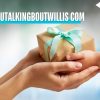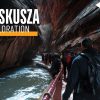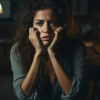You may ask – “Why to bother comparing electricity rates?”
Well, the majority of power supply companies in Australia are known for price differentiation. They have different prices for different customers. The rates also change with location.
There are many reasons for such situations including:
- Electricity demand
- Cost of fuel
- Maintenance and operating cost of power companies
- Government regulations, etc.
Hence, it is vital to compare the rates before you opt for one company. However, if you have not done so before, there is a high chance you are already paying high prices.
Well, worry not as various websites have got you covered! Those dedicated websites can help you compare the electricity rates and plans of various companies across the continent and avail the best deal on offer.
How to compare?
The process to compare electricity pricing plans differs from websites. However, there are a few simple steps that are generally applicable. Note that, you can also compare gas plans as well.
The steps include:
- Select the type of energy you are looking for: electricity, gas, or both.
- Enter your postcode.
- Select the type of property you own – house or business. If house, you may have to provide the number of residents. For example, 1 person, 2 to 3 people, 4 to 5 people, or more than 5 people.
- Provide some other information. Like, whether you have a smart meter, solar panels, etc.
- Select the electricity distributor in your area.
- Select the electricity provider in your area.
- Enter your recent electricity bill. You can skip this step though. In case you want to provide, you will have to input additional information like peak/off-peak rates, controlled load, etc.
After you have entered all the information, hit the respective button to proceed.
In the next page, you will get to compare electricity rates and plans of various power companies in your area.
What to look for?
Look for the following when you compare electricity plans:
1. Late payment fee:
The charge you incur if you fail to pay the bill within the due date.
2. Payment processing fee:
Some companies charge you a processing fee for each payment. They can also charge you an additional amount for payments made using a credit card.
3. Paper billing fee:
You have to pay a fee for having a hard copy of your bill delivered to your home.
4. Tariff charge type:
Electricity suppliers have either of the following:
- Single tariff – Fixed charges up to a particular limit (kWh). Charges increase after crossing this limit.
- Time of use tariff – Charges differ with time.
Companies may have different charges for weekdays and weekends. Weekends may not have off-peak charges, unlike that of weekdays’.
5. Solar feed-in:
If you have solar panels installed, you can get subsidies on your bills. Although low, solar feed-in charges can help you save some.
6. Green power:
The amount of green power that you can opt for differs with companies. Generally, it ranges from 25 to 100%.
So, easily compare electricity rates from these websites, and you might be able to save a considerable amount on your next bill.
Read Also:





















